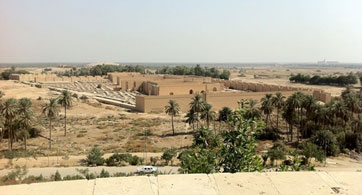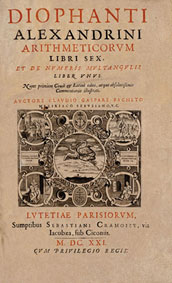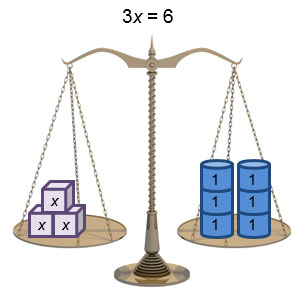
Source: Babylon city Iraq, Aziz1005, Wikimedia Commons

Source: Babylon city Iraq, Aziz1005, Wikimedia Commons
Equations have been used to represent real-world situations for thousands of years. As early as 2000 BC, Babylonians created equations in order to solve scientific problems. They generated formulas that could be used to solve many different types of equations.

Source: Diophantus-Cover, Leonid 2, Wikimedia Commons
Greek mathematicians, including the famous Diophantus of Alexandria, who lived in the 3rd century AD, continued using equations. Greeks used equations to represent real-world situations and the solutions to those equations to solve meaningful problems. Diophantus’s book, Arithmetica, continues to be used by mathematicians who solve equations with integer solutions.

Source: Toby Hudson, Brass scales with flat trays balanced, Wikimedia Commons
In this lesson, you will use the idea of equivalent expressions to solve equations. Solving an equation means to determine the value of the variable that makes both sides of the equation equivalent.
Think about a balance scale, like the ones you use in science lab. In the figure, there are two equivalent expressions: 3x and 6. You can use the equivalent expressions to determine the value of x that makes the equation true.